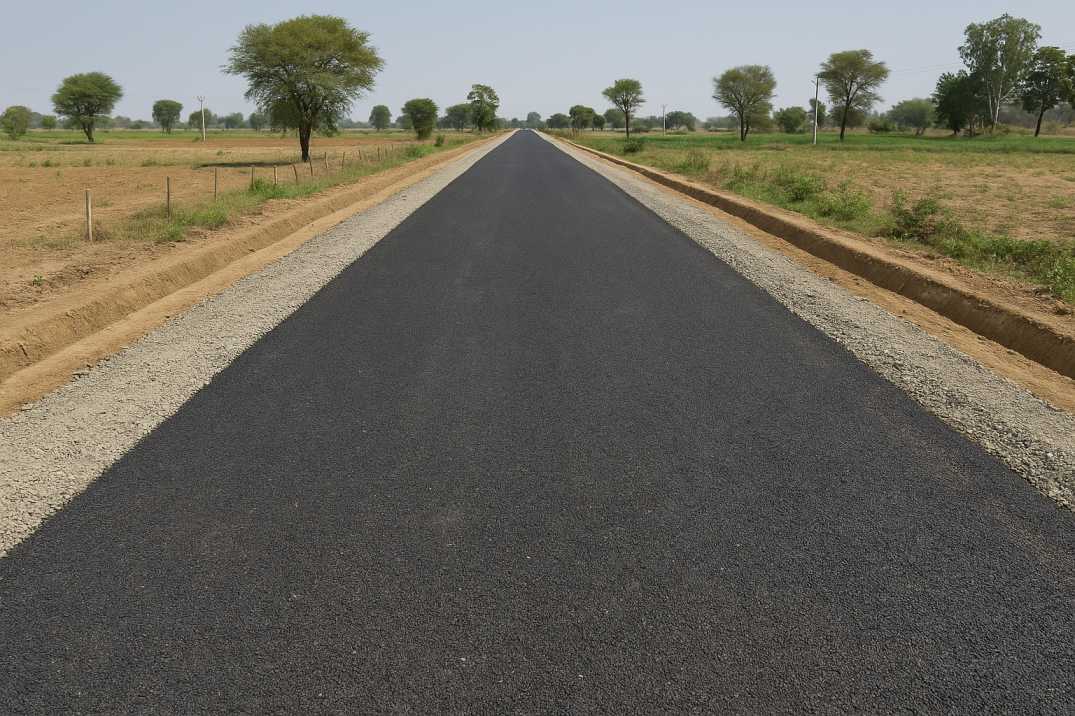Contact Us
RoadVision AI
Private Limited
Office No. 308 & 310, B Block
Ansal Chamber - 1, Bhikaji Cama Place,
Near Engineers India Limited (EIL) Bhawan, New Delhi - 110066
© 2024 | RoadVision AI | All rights reserved
Designing flexible pavements is a critical process to ensure long-lasting, safe, and cost-effective road infrastructure. The Indian Roads Congress (IRC) provides detailed guidelines for pavement design through IRC SP 62 – Guidelines for the Design and Construction of Flexible Pavements for Low Volume Rural Roads.
In this blog, we will provide a step-by-step guide to designing bituminous flexible pavements in India, based on IRC SP 62 and IRC 37, focusing on road asset management in India and best practices for pavement design.

Flexible pavements consist of layers of granular material and bituminous surfacing that distribute the traffic load to the subgrade. Unlike rigid pavements, flexible pavements have a gradual load distribution and can adjust to minor settlements without major cracking.
Proper design ensures reduced maintenance costs, longer pavement life, and improved road safety.
The IRC SP 62 design method follows a mechanistic-empirical approach, combining:
This design ensures that bituminous roads in rural and low-volume areas can handle projected traffic without premature failure.
Traffic data is collected through traffic surveys (RoadVision AI Traffic Survey) to estimate:
Traffic loading is converted into cumulative msa using vehicle damage factors and lane distribution.
Soil strength is tested using the CBR method:
(RoadVision AI Pavement Condition Survey helps in collecting accurate ground data.)
Based on:
IRC SP 62 provides design thickness charts for granular layers and bituminous surfacing.
The total pavement thickness is decided by:
For example:
Proper side drains and camber (2–3%) are essential to prevent water stagnation, which is a common cause of premature pavement failure.
All materials must conform to IRC & MORTH specifications.
(RoadVision AI Road Safety Audit ensures that construction quality meets safety standards.)
Even after proper design, road asset management in India is crucial.
Using AI-powered road inspection tools ensures:
Following the IRC SP 62 design method:
For large-scale projects, AI-based pavement data collection helps improve design accuracy and long-term performance.
Designing flexible pavements as per IRC SP 62 is vital for building durable, cost-effective, and safe rural roads in India. The step-by-step method, starting from traffic and soil analysis to pavement thickness design, ensures a scientific approach to road construction.
RoadVision AI is revolutionizing road infrastructure development and maintenance by leveraging cutting-edge AI in road safety and computer vision technology. Through advanced digital twin technology, the platform performs comprehensive road safety audits, enabling early detection of potholes, cracks, and other surface issues, ensuring timely repairs and improved road conditions. It also enhances traffic surveys by providing data-driven insights to address challenges like traffic congestion and optimize road usage. With a focus on building smart roads, RoadVision AI ensures full compliance with IRC Codes, empowering engineers and stakeholders to reduce costs, minimize risks, and improve the overall road safety and transportation experience.
By integrating AI-based data collection and road asset management tools, engineers can further enhance pavement design accuracy and reduce life-cycle costs.
Book a demo with RoadVision AI to learn how our AI-powered road inspection solutions can help you plan, design, and maintain pavements efficiently.
Q1. What is IRC SP 62 used for?
It provides official guidelines for designing low-volume flexible pavements in India, focusing on cost-effective and durable rural roads.
Q2. How is traffic loading calculated in pavement design?
Traffic surveys estimate commercial vehicles per day, which is converted into cumulative msa for design.
Q3. Why is CBR important in pavement design?
The CBR value defines soil strength, which determines the required pavement thickness for long-lasting roads.